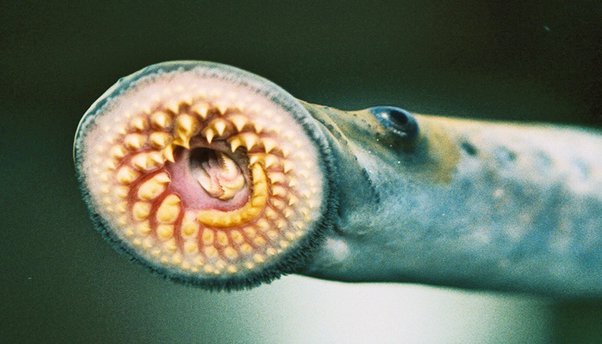Jawless fish, scientifically known as Agnathans, are an ancient and intriguing group of aquatic creatures that have been around for hundreds of millions of years. These remarkable fish lack the characteristic jaws found in most modern fish, setting them apart as living fossils that provide valuable insights into the evolution of vertebrates.
Evolutionary Marvels:
Jawless fish are a primitive group that predates many other fish species, and studying them unlocks a wealth of information about the early stages of vertebrate evolution. The two main types of jawless fish are hagfish and lampreys.
Hagfish: Slimy and Mysterious:
Hagfish, often referred to as the “slime eels,” are known for their unique defense mechanism. When threatened, hagfish release a copious amount of slime, creating a protective and slippery barrier. This adaptive feature helps them escape predators and navigate their environment.
The anatomy of hagfish is equally intriguing. They lack true vertebrae, relying on a cartilaginous notochord for structural support. This feature aligns them with ancient fish species, offering a glimpse into the early stages of vertebrate evolution.
Lampreys: Parasitic Marvels:

Lampreys, another group of jawless fish, are characterized by their distinctive circular mouth, adorned with sharp teeth. Some lampreys exhibit a parasitic lifestyle, attaching themselves to other fish to feed on their blood and bodily fluids. This parasitic behavior, while a bit gruesome, showcases the adaptability and diversity within the jawless fish group.
Survivors through Time:
Despite their seemingly primitive nature, jawless fish have demonstrated remarkable resilience over the millennia. Their ability to adapt to different environments and exploit various ecological niches has allowed them to persist through major geological and climatic changes.
Conservation Challenges:
While jawless fish have survived for eons, many species face contemporary threats, primarily due to habitat destruction and overexploitation. Conservation efforts are crucial to preserving these living fossils and maintaining the delicate balance they bring to aquatic ecosystems.
Intriguing Research Avenues:
Scientists continue to explore jawless fish for various reasons, from understanding the genetic basis of jaw development to unraveling the mysteries of immune system evolution. The unique features of these fish make them invaluable in addressing broader questions about vertebrate biology.
Conclusion:
In conclusion, jawless fish are not just relics of the past; they are living marvels that offer a glimpse into the early chapters of vertebrate evolution. From the slimy hagfish to the parasitic lampreys, these creatures continue to captivate scientists and enthusiasts alike. As we delve deeper into their world, we not only unravel the secrets of our evolutionary history but also discover the importance of preserving these ancient wonders for generations to come.
I hope this provides a good starting point! If there’s a specific area you’d like to explore further or if you have any additions or changes in mind, feel free to let me know!


купить диплом высшем образовании калининграде купить диплом высшем образовании калининграде .